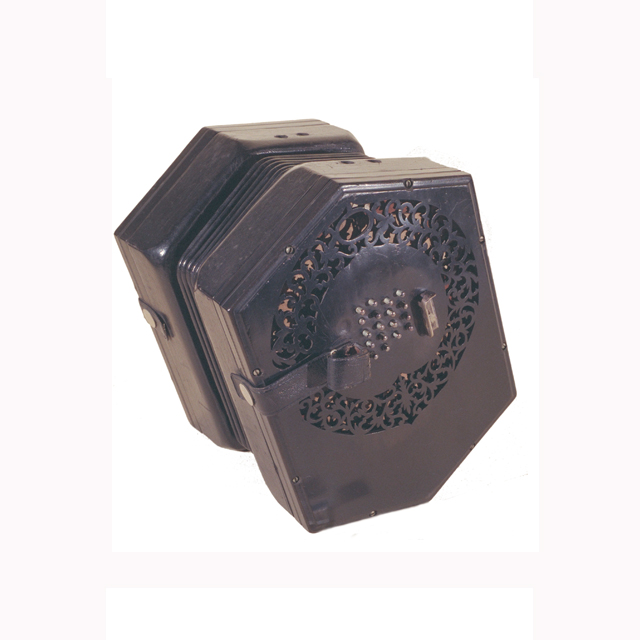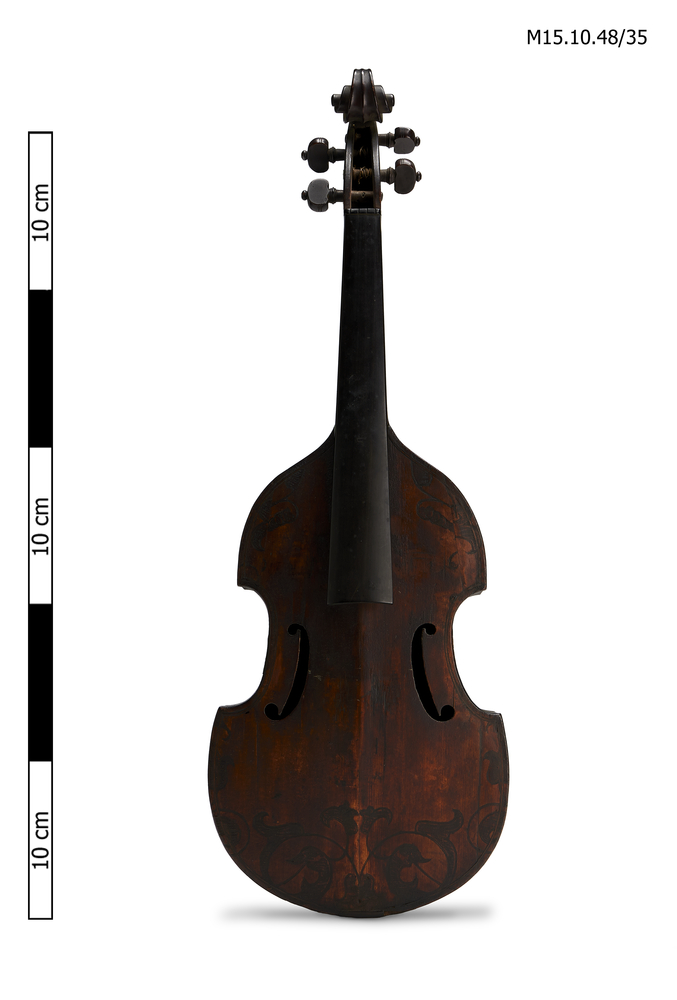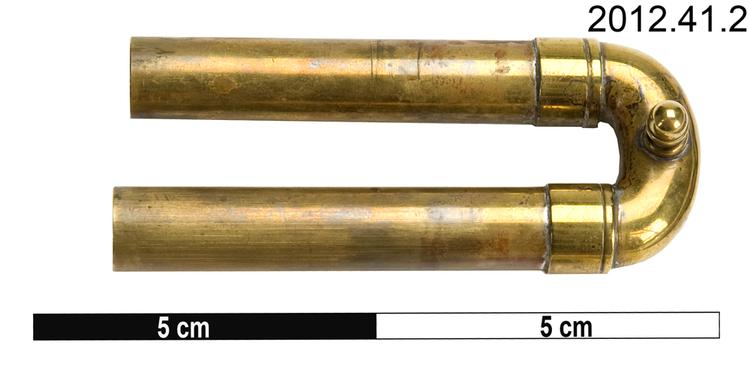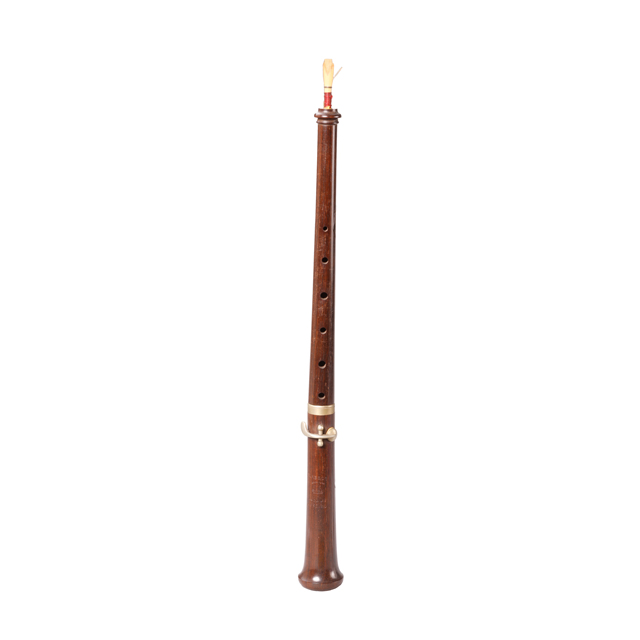
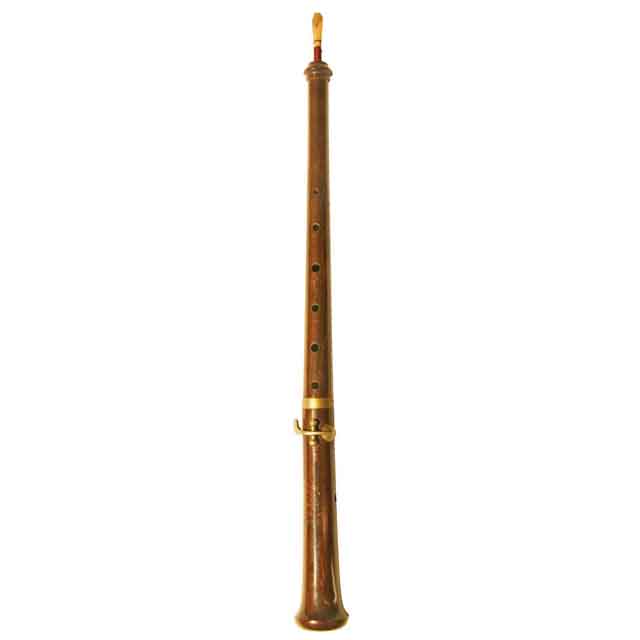
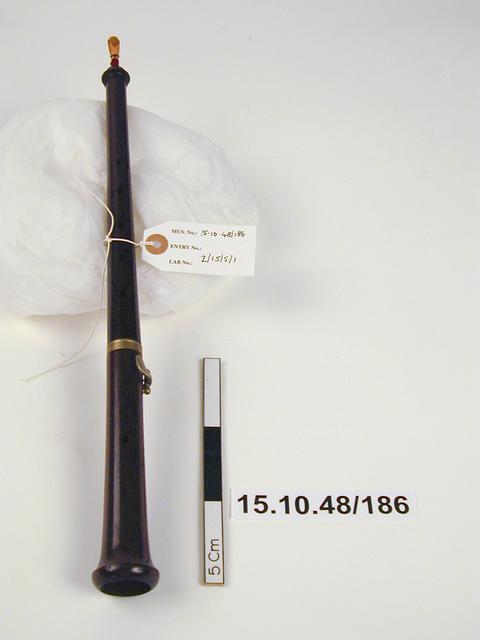
Musette with six finger holes and one thumb hole. Body of wood with German silver ferrule. One round, cupped key of German silver mounted on pillars. The lowest note is a nominal D, which corresponds roughly to G in concert pitch. Body consists of an upper joint and a foot joint. The double reed shown in the photo is not original. Bell inscription reads: DOUGLAS & CO. LONDON "Improved".
The term 'musette' originally referred to various French bagpipes of the 17th and 18th centuries. From the 1830s onwards, a number of French woodwind makers began to apply the term to instruments without bags. This chanter-style musette became popular in France and later in Britain and was often used to add a rustic flavour to music making. This instrument was made by Douglas & Co, who were based at 7 South Street (now Domain Street) EC2, just north of Moorgate in the City of London. It was later owned by the musical instrument collector Percy Bull and was sold to the Horniman Museum, together with the rest of his instrument collection by his widow in 1948.





